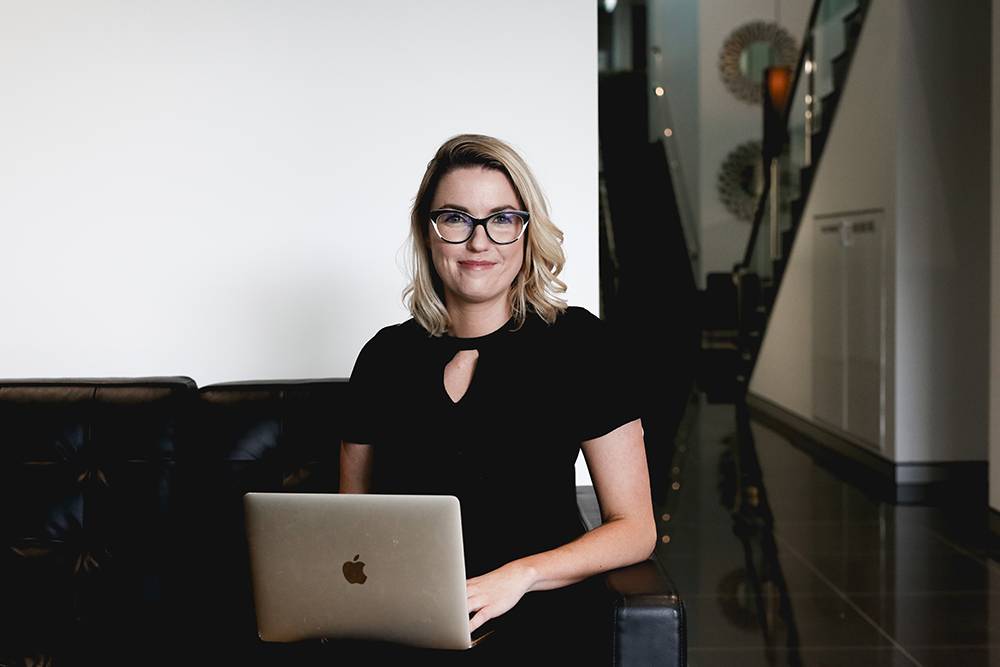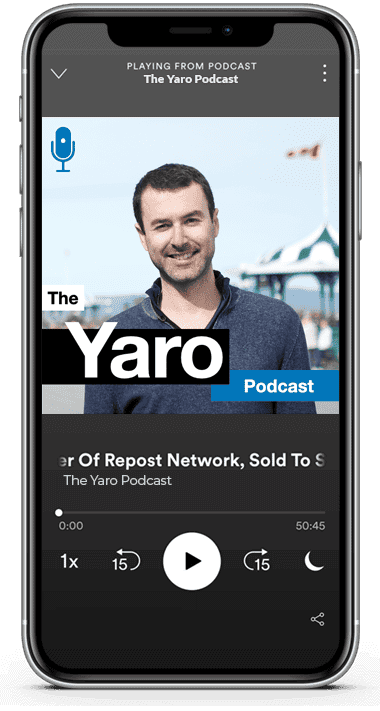Danielle Lewis and I first connected back in Australia when we were both active bloggers.
At the time, Danielle's blog BrisbaneThreads.com was a side project where she featured and fostered the local fashion scene.
The plan was to go national, eventually opening a ‘threads' blog in each major city.
She kept her corporate day job in sales, attempting to grow her blog business to the point where she could consider quitting her job.
Little did she realize how much her business idea would have to morph before she could finally leave her job and take on entrepreneurship full time.
From Blog To Software To Marketplace And Agency
This podcast with Danielle is the best example I've heard of the power of pivoting product ideas to find something that works.
It also demonstrates how the process of pivoting several times helps founders develop the skills and knowledge necessary to make the final, successful pivot.
Danielle and her business partner decided to take their savings and use it to build software — a pivot away from a pure content play with her blog.
The first software idea was to build an online hub for everyone involved with fashion, from designers, to photographers, models and brands. A key part of the of the software was to offer a ‘virtual change room' where people could see what clothes would look like.
Unfortunately, they were trying to build something far too technical. They were too early, and not being technical co-founders, the challenge was too great.
From this early investment in technology, they were able to take part of their software and use it to pivot to building a social network for fashion bloggers.
By this time they'd already used up their savings, so to continue software development they used their credit cards to pay for technical support.
It didn't take long before Danielle and her cofounder to realize they weren't enjoying the new direction, so they decided to pivot again, focusing on an area Danielle was already familiar with — the corporate world.
As part of their social platform, they had built a product availability database, scraping information from online stores to determine where to buy items of clothing.
The new idea was to use this data and sell it to brands, helping them identify where their inventory was. This proved to be a bad idea, as brands could just ask their interns to make a phone call to retailers to find out stock numbers.
By this point Danielle learned a critical lesson – don't build software until you are sure that your target customer wants to buy it.
After five years spent building software, trying to find customers, and learning about the online fashion space, Danielle and her cofounder finally found something that worked.
Influencer marketing was rising as a legitimate channel for attracting customers, and Danielle was in a perfect position to capitalize on the new wave.
Danielle knew what it was like to be an influencer focused on content due to her years spent blogging. They had plenty of software experience and had the awareness to focus on what the market demonstrated they wanted, not just what they thought people might pay for.
In one final pivot, Danielle and her team threw everything they'd built so far out the window, and went to work on what would become Scrunch.com, a platform for researching influencers and an agency to help you run campaigns with them.
Influencer Marketing Is Booming
I've personally never spent money to do an influencer marketing campaign. Many years ago I did take sponsored posts on my blog, including being part of a campaign run by Visa, so I've made money as an influencer.
Today the influencer channel is huge, so big that companies like Scrunch exist, helping brands match with the right influencers and coordinate campaigns.
During the podcast, I asked Danielle to explain how exactly an influencer marketing campaign would play out today. We used a couple of example products to run through how Scrunch does what it does, and how a company/brand could make use of influencer marketing.
It's an exciting marketing channel and you don't need a lot of money to access it. An influencer campaign can be run across what are known as ‘micro-influencers‘, people with a small but loyal following in niche markets.
If you want to learn more and find the right influencers for your campaign, I suggest you check-out Scrunch.com and listen to this podcast so you understand how it all works.
Enjoy the episode,
Yaro
Topics Covered In This Podcast
- Danielle's rollercoaster journey through her 5 pivots of Scrunch.com before reaching its existing state
- The lessons Danielle took from each pivot of her business and how they each carried her forward each time
- The biggest mistakes you can make with any startup business
- What NOT to do when looking to raise capital
Relevant Links
- Scrunch.com
- BrisbaneThreads.com
- Telstra
- The 4 Hour Work Week (Book)
- NewsCorp
- Under Armour
- Channel 9
- Amazon
[ Download MP3 | Transcript | iTunes | Soundcloud | Stitcher | Spotify | Raw RSS]
If You Enjoyed This Episode, You May Also Like…
- Cory Sanchez: Why It Took Four Careers To Eventually Become Co-Founder Of A 7-Figure LinkedIn Marketing Business
- Sarah Timmerman: How Fashion Website ‘Beginning Boutique’ Grew To $4 Million A Year In Sales And Became Australia’s Top Ranked Social Media Brand With Over 1 Million Followers
- Madeline Veenstra Explains How She Achieved Early Startup Success Combining Fashion With A Wiki
- Kate McKibbin: How This Aussie Fashionista Successfully Built Two Six-Figure Blogs




0 Comments